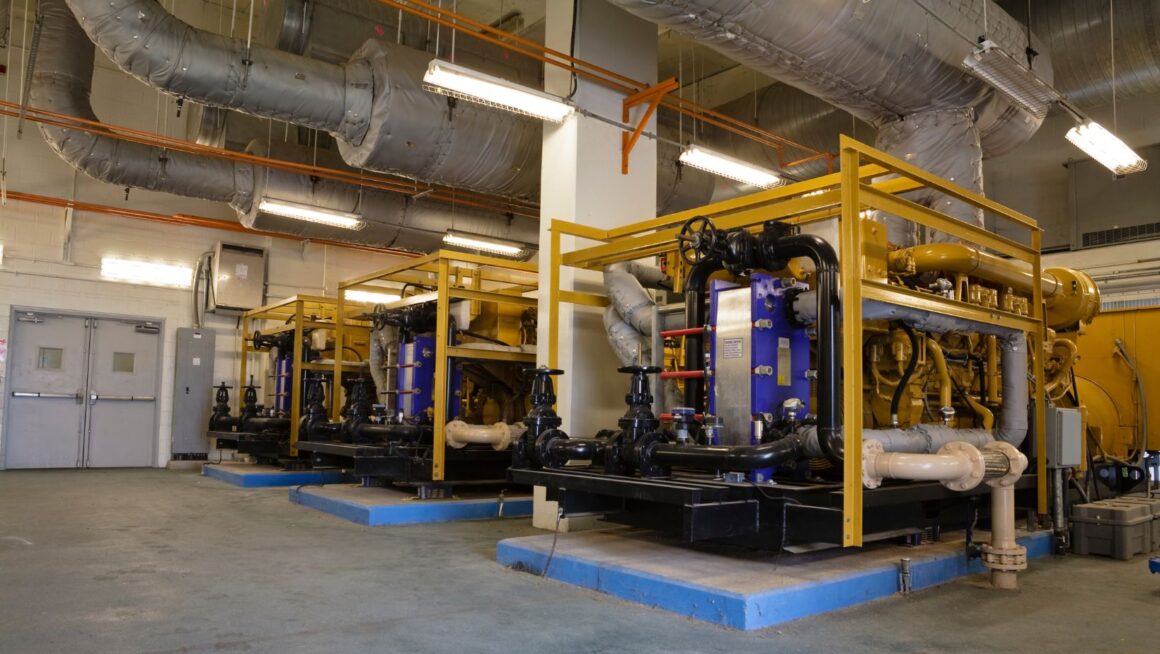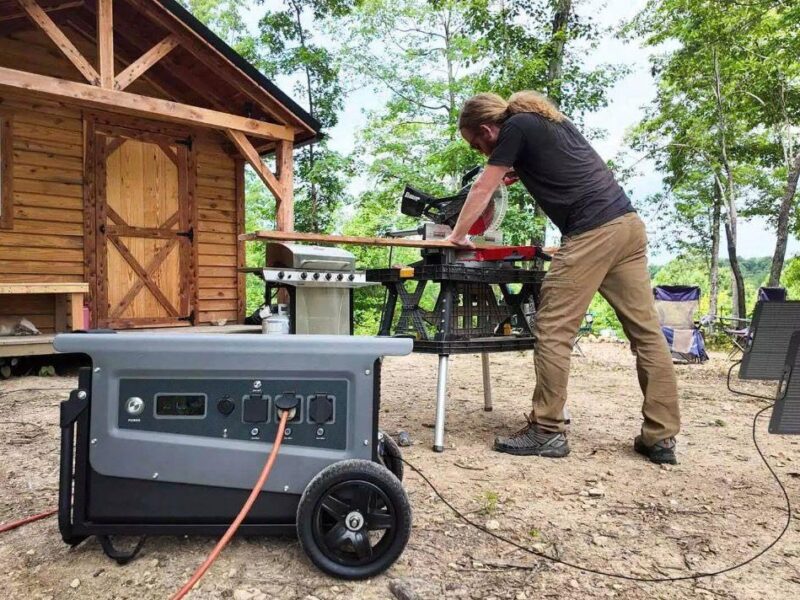With the changing global power systems to cleaner, more decentralized, and dynamic grids, ancillary services have gained significant value in the stability of systems and reliability. Historically supplied by large utility-scale power stations, such services are currently accessible to industrial power stations-facilities capable of not only generating electricity, but also in other flexible and profitable ways to serve the grid.
Nonetheless, proper involvement must involve strategic planning, technology and market mechanism knowledge. The article discusses the ways power stations in industries can increase the utility of the ancillary services in the market and take advantage of the opportunities that arise in the current electricity markets.
What are the Ancillary Services and Why are they Important?
a. What Are Ancillary Services?
The support functions needed to ensure a stable and reliable power grid are referred to as ancillary services. They also stay in line with electricity demand and supply in real time and ensure that the frequency of the system does not exceed acceptable ranges and also voltage quality is upheld.
The major areas of ancillary services are:
- Frequency Regulation: Regulating the supply and demand to keep the frequency in the grid (e.g., 50/60 Hz).
- Spinning Reserve and Fast Response: It involves the provision of backup generation capable of immediately coming online in case of sudden outages.
- Voltage Control and Reactive Power Support: The voltage is stabilized by means of reactive power.
- Black Start Capability: In the case of a complete grid outage, the power is restored.
b. Their reasonableness to Industrial Power Stations.
As the percentage of renewables increases, so does the volatility and intermittency of grid operators. The role of industrial power stations that may have swift start-up capacity, adjustable generation, and sophisticated control systems can be critical towards stabilizing these changes as well as earn extra income in the markets of ancillary services.
The Use of Industrial Power Stations in the current Power Systems.
a. Between Base Load and Flexible Operation.
In the past, industrial power stations, particularly those that are connected to manufacturing or heavy industry, were operated as a baseload unit, and they are run 24/7 to supply internal energy demand. Modern markets today have flexible market mechanisms and high levels of automation and such plants can change to generating mode and standby mode very fast and as such can react to grid signal variations in real time.
b. Bifunctionality: Self-Supply and Market Partaking.
The industrial stations can be self-sufficient energy providers of the industrial processes and service providers of the grid. They are able to sell excess power, provide demand-side management or ancillary services without disrupting core operations by integrating with the market.
Power Stations using Ancillary services can offer.
a. Frequency Regulation and Response.
One of the most lucrative and feasible technologies of industrial power stations is frequency regulation. These plants can increase or decrease generation by a couple of seconds using gas turbines and cogeneration plants, or even a battery system to stabilize the frequency of the grid.
b. Spinning and Non-spinning Reserves.
Some of the power plants that have standby generation or a back up diesel / gas turbine can be involved in spinning reserves, where part of their capacity is kept online and are ready to react immediately to demand spikes or outages. Plants are capable of coming online rapidly, and can provide non-spinning reserves (activating within minutes). These can be gas engines or combined-cycle units.
c. Reactive Power and voltage support.
The industrial stations are now possible due to modern power electronics as well as advanced control systems that enable the management of reactive power output and stabilize grid voltage. Through the involvement in the markets of voltage support, the plants will be able to receive revenue as well as enhance the stability of their work.
d. Black Start Capability
Black start units can be in the form of industrial plants that have their generators and energy storage; they can be used to start parts of the grid following a large scale outage. They have strategic value to the transmission operators due to their capability to operate independently of the main grid.
Participation Technological Enablers.
a. State of the Art Automation and Control Systems.
In order to be part of the ancillary services, the power plants of industrial nature should have automated dispatch and control systems that can react to real time signals by the grid operators. Monitoring, coordination and rapid response require Supervisory Control and Data Acquisition (SCADA) systems and Distributed Energy Resource Management Systems (DERMS).
b. Energy Storage Integration
The inclusion of battery energy storage systems (BESS) will improve the capacity of the plant to offer fast frequency response and load-following services. The batteries can respond within milliseconds to form a perfect complement in the traditional generation asset in the ancillary service market.
c. Intelligent Sensors and Foresight Analytics.
The IoT-based monitoring allows grid monitoring and real-time measurement of the performance of assets. Artificial intelligence predictive analytics may predict the demand and abnormalities in energy, optimize participation, by finding the most lucrative moments to provide services.
Market participation strategies refer to the actions a company undertakes to stay competitive in the market (Palmer 1997, p.22).<|human|>Market Participation Strategies Market participation strategies are defined as the actions that a company takes to remain competitive in the market (Palmer 1997, p.22).

Emerging Ancillary Service Demands.
a. The knowledge of Market Structures.
The electricity markets vary depending on the area, but in the majority of cases there is a day-ahead market, a real-time market and an ancillary services market. Industrial power generation facilities have to be registered with market operators, which may be Independent System Operators (ISOs) or Transmission System Operators (TSOs) so that they can bid their capacity and flexibility.
It is important to understand these market rules such as qualification rules as well as response time in order to participate in the market successfully.
b. Aggregation and Virtual Power Plant (VPPs).
Smaller industrial stations may become members of aggregators, or enter into virtual power plants, integrating several distributed generators into one market participant. This strategy expands bidding power and enables one to be involved in a service that has a higher minimum requirement.
c. Optimization and Dynamic Bidding.
Current state of the art software allows automatic engagement in the market where bids are adjusted dynamically following real-time prices, plant condition, and grid conditions. This does not only maximize profits, but also makes sure that performance measures that are established by market operators are followed.
Operational and Economic Advantages.
a. Additional Revenue Streams
Engagement in ancillary services gives it new revenue generation avenues other than energy sales. Frequency response, voltage support and reserve capacity payments can generate substantial profitability particularly in volatile markets.
b. Improved Asset Utilization
Plants can run flexibly instead of being on full blast all the time, which will prolong the life of equipment and also minimize wear and tear. This results in optimum use of assets as a balance between production and standby service participation.
c. Improved Reputation and Sustainability.
Industrial power stations can reinforce their reputation as responsible, future-oriented energy partners by contributing to the stability of the grid and integrating renewable energy. This will be able to enhance stakeholder relations and draw investors who are environmentally conscious.
Challenges to Overcome
a. Market Barriers and regulatory.
In certain areas, non-utility generators might not be allowed to participate in the market through market rules and grid codes. Widened participation largely requires simplification of registration procedures and renewing standards to suit distributed generation.
b. Technical Readiness
All industrial power plants cannot do fast ramps or be equipped with the communication infrastructure required to provide real-time ancillary services. The control systems and automation are thus important to be invested in.
c. Striking a Balance in the Core Industrial Operations.
The industrial facilities should make sure that their main manufacturing or process needs are not affected by the involvement in ancillary services. This balance is maintained with the help of strategic scheduling and automated control integration.
The Future of the Industrial Power Stations.
a. The emergence of flexible and hybrid systems.
The increased use of hybrid power systems, that is gas turbines plus renewables and energy storage, will increase the capacity of the industrial power stations to generate several other ancillary services at the same time.
b. Artificial Intelligence and the use of Blockchain.
AI-powered frequency and voltage stability forecasting on future markets will become important, and blockchain technology may ease transactions and confirmation of service delivery. Industrial stations that embrace such technologies are the first to get an upper hand.
c) Decentralized Markets and Policy Evolution.
Industrial generators are being realized by governments and regulators as key to grid resiliency. New opportunities of industrial power stations to become more active in the market will be opened by policy structures which will encourage flexibility, transparency, and rapid reaction.
Conclusion
Industrial power stations no longer have to exist to generate energy, they are increasingly part of the energy ecosystem offering essential ancillary services which guarantee reliability, efficiency and resilience.
These facilities can become flexible and smart grid partners by investing in automation, energy storage, and market integration, converting them into the traditional generators. By so doing, they not only promote the stability of the present-day electricity market, but also open the new sources of value, which is the next step in the history of the industrial power generation.






